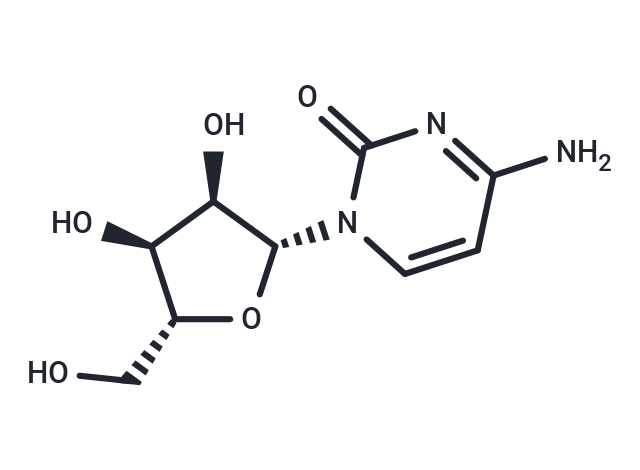Shopping Cart
- Remove All
 Your shopping cart is currently empty
Your shopping cart is currently empty

Cytidine (Cytosine-1-β-D-ribofuranoside) is a pyrimidine nucleoside comprised of a cytosine bound to ribose via a beta-N1-glycosidic bond. Cytidine is a precursor for uridine. Both cytidine and uridine are utilized in RNA synthesis.

| Pack Size | Price | Availability | Quantity |
|---|---|---|---|
| 1 g | $31 | In Stock | |
| 5 g | $64 | In Stock | |
| 10 g | $93 | In Stock | |
| 1 mL x 10 mM (in DMSO) | $29 | In Stock |
| Description | Cytidine (Cytosine-1-β-D-ribofuranoside) is a pyrimidine nucleoside comprised of a cytosine bound to ribose via a beta-N1-glycosidic bond. Cytidine is a precursor for uridine. Both cytidine and uridine are utilized in RNA synthesis. |
| In vivo | D-cycloserine (DCS) facilitates extinction of conditioned freezing to the light CS when no drug pre-exposure has occurred, but pre-exposure to DCS just prior to conditioning disrupted the facilitation of extinction effect in mice. [1] D-cycloserine (DCS) which has a high affinity for the glycine modulatory site in the NMDA receptor complex modulated memory processing in a dose-dependent manner. DCS also facilitates retention in 'senescence-accelerated mice' in which impairment of learning andmemory increases with age. [2] D-cycloserine (DCS) exhibits facilitated extinction of fear but are able to reacquire fear of that conditioned stimulus (CS) in a similar manner as saline-treated control rats. DCS-treated rats exhibits generalized extinction (i.e., they are less fearful of a non-extinguished CS) in comparison to controls. [3] D-cycloserine (DCS), an antimycobacterial agent known to cross the blood-brain barrier, binds with high affinity to this glycine modulatory site, functions as a positive modulator, and facilitates performance of learningtasks in rats. DCS appears to be a potent cognitive enhancer at doses lower than those required for antibacterial activity. [4] D-cycloserine injections (3.25, 15, or 30 mg/kg) before 30 non-reinforced light exposures dose-dependently enhances extinction but does not influence fear-potentiated startle in rats that does not receive extinction training. [5] |
| Alias | Cytosine-1-β-D-ribofuranoside, Cytosine β-D-riboside |
| Molecular Weight | 243.22 |
| Formula | C9H13N3O5 |
| Cas No. | 65-46-3 |
| Smiles | O[C@H]1[C@@H](O[C@H](CO)[C@H]1O)N2C(=O)N=C(N)C=C2 |
| Relative Density. | 0.9867 - 0.99809 g/cm3 (55 - 25°C) |
| Storage | Powder: -20°C for 3 years | In solvent: -80°C for 1 year | Shipping with blue ice. | |||||||||||||||||||||||||||||||||||
| Solubility Information | H2O: 45 mg/mL (185.02 mM), Sonication is recommended. DMSO: 60 mg/mL (246.69 mM), Sonication is recommended. Ethanol: < 1 mg/mL (insoluble or slightly soluble) | |||||||||||||||||||||||||||||||||||
Solution Preparation Table | ||||||||||||||||||||||||||||||||||||
H2O/DMSO
| ||||||||||||||||||||||||||||||||||||

Copyright © 2015-2025 TargetMol Chemicals Inc. All Rights Reserved.